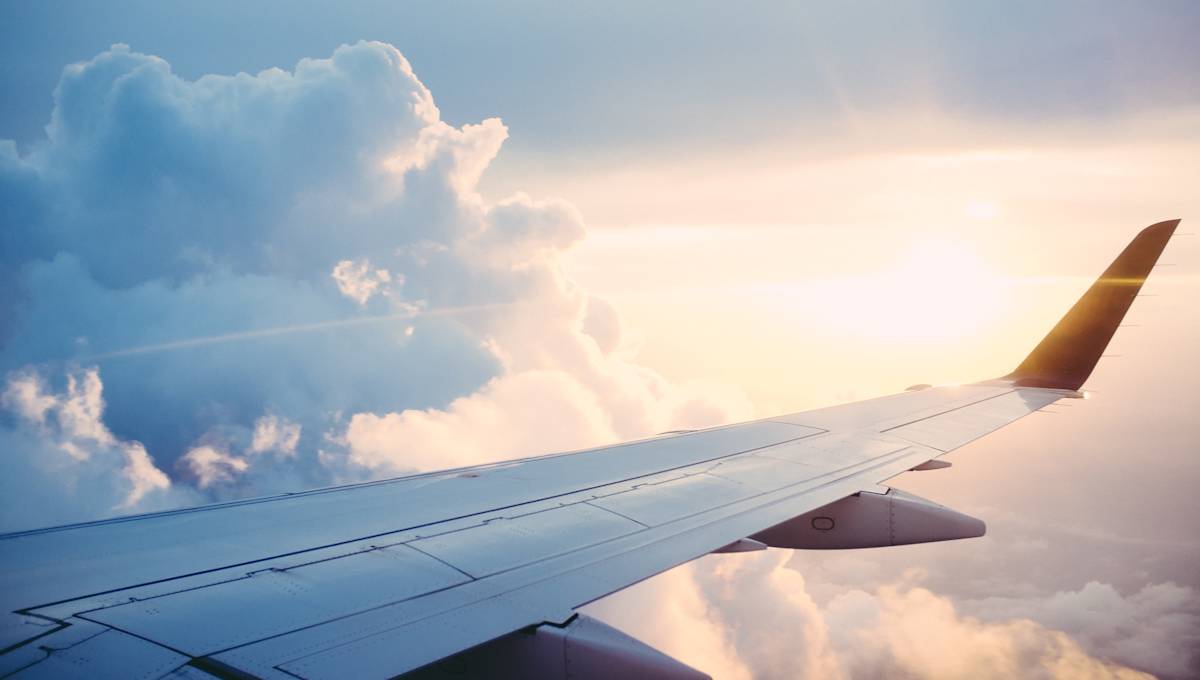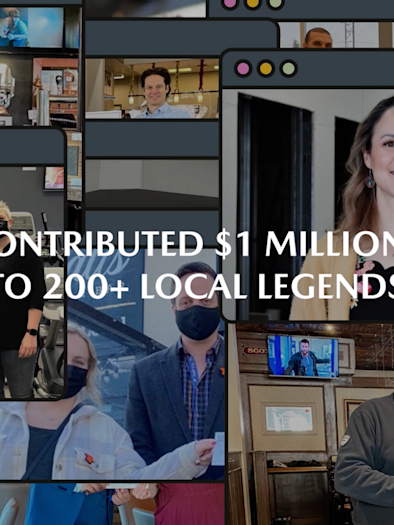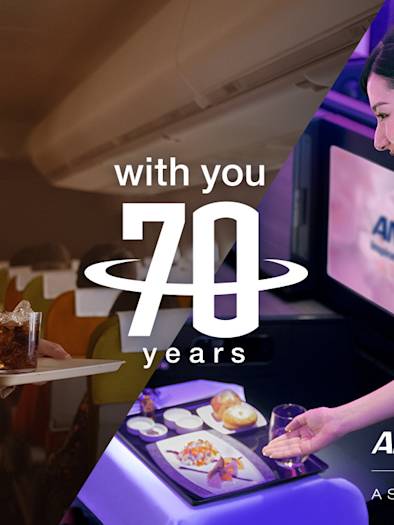
The Future and Dilemmas Facing the Travel and Tourism Industry
Our expectations for the post-COVID travel and tourism industry and seven key communication-tips to survive in this new reality
COVID-19 has been a major thorn in the travel and tourism industry’s side. After over a year of lockdown across the world, the thought of the re-opening of the borders may seem imminent, but it is no less daunting. Despite the growing number of vaccines being developed and administered, we now face a new challenge. A lot of people don’t want to take it. And even if they do, there are new variations of the virus that are spreading, that the vaccine may not even be able to protect you from.
A recurring theme throughout this pandemic has been “uncertainty”. Mostly, people have had to learn to live with it. But it is difficult to foresee how this much uncertainty may impact how people make decisions moving forward. In what cases will people accept uncertainty, and in which cases will they demand to know? Which countries do they feel safe visiting, and which countries have too many unknown factors?
Despite the many uncertainties surrounding the re-opening of society, we know one thing for sure: society will re-open (in some shape or form). Already we are seeing a growing number of people being vaccinated across the globe, with the UK expecting every adult to have received at least one dose by the end of July this year and the US expecting 75 % to have received the first dose before July. 55 % of the EU population is expected to be vaccinated by the end of June. Governments are also developing systems to alleviate the restrictions on those who have received the vaccine. How this will work however, and what will be required of businesses in the travel and tourism industry remains to be seen.
In the meantime, businesses in this sector should take the time to acknowledge and understand the changes that have happened over the past year and adjust accordingly.
Hill+Knowlton Strategies has, since the company’s inception, worked with various businesses operating in the travel and tourism industry. We’ve drawn on our experiences and perspectives from working with the industry in Europe, the Americas, and the Middle East, to compile an outline of our understanding of the industry’s current situation, upcoming changes and associated challenges and how best to use communication in the current and future state of the industry.
Our suggested actions are for those who wish to strengthen their overall position in the new landscape to be better enabled to face a range of issues and challenges without being forced into decisions that yield short-term gains and long-term consequences.
Like with hairstyles, preferences change
A selection of some of the key changes impacting the future landscape of the industry are outlined below.
This is not a comprehensive list of changes in the travel and tourism industry caused by COVID-19, as our goal is not to sum up the things that a lot of you already know. Rather, our main objective is to highlight some of the key changes that we believe will have the greatest impact, and that need to be responded to by businesses in the industry.
With these changes in mind, drawing from our experiences from working with businesses in the industry, we’ve come up with a series of measures and adjustments businesses should make to re-position themselves for the future industry.
New Destinations
With the new restrictions and circumstances, people prioritize differently than they used to. As international travel has become unattainable, people have begun exploring their own countries, travelling locally. Once the borders begin “opening” again, this trend is likely to continue, as people may be more inclined to travel closer to home, specifically in their own region. Choosing to travel in one’s own region is partially due to proximity to your own country and hospitals, in case of an emergency, and in part due to convenience when using alternative means of transportation. Many may prefer to avoid travelling by airplane, when possible, due to the increased risk of exposure compared to travelling by car with your family.
New Activities
In addition, the type of destinations people prioritize are likely to change. A heightened focus on hygiene, ventilation and space will impact where people choose to travel, and what sights are preferred. Squeezing into a viewing at Madame Tussauds may no longer be as desirable for many people. Instead, destinations where nature and outdoor activities are available, will be increasingly popular.
New Expectations and Demands
Travelers’ increased focus on health and safety is also reflected in their growing expectations surrounding cleanliness and hygiene standards. Trust in brands have declined during COVID-19, with the travel and tourism industry seeing the biggest decline, according to a recent KPMG survey. Now more than ever, businesses need to show that they’re making investments and taking the necessary steps to ensure that their locations are clean and safe, if they want to retain and regain their customer’s trust.
This is, however, in no way equaled to higher price expectations. On the contrary, travelers are expecting lower prices, given their knowledge of the difficulties the travel and tourism industry is currently experiencing. The travel and tourism industry is now expected to operate like a retail outlet, with major sales and discounts just to clear out storage. Traditional booking and cancellation policies are also no longer considered adequate. People are expecting increasingly flexible deals, as well as increased accountability from the businesses.
The role of the middle-man
The usual middlemen who coordinate the bookings and special offers, may not be as popular anymore. Due to the increased uncertainty associated with travelling now, people may prefer dealing directly with businesses delivering the service, as opposed to going through a booking service. For health and safety reasons people want to be able to keep the businesses accountable to certain standards and policies. This level of confidence in safety and security is likely to be harder to achieve when communicating through a third party.
With this in mind, it is clear that the landscape is shifting. With these new demands, priorities and expectations, businesses will need to reposition themselves if they want to remain relevant in the future.
Using communication to re-establish your market position
Despite the current official or self-enforced restrictions, there is still a desire to travel, or at least dream of travelling and start making plans for future travels. A KPMG pulse survey conducted towards the end of 2020 shows that many plan on booking holidays for the upcoming future, with 56 % planning to book holidays for January-June 2021, and 63 % planning to book for July-December 2021.
So, the market is still there, and people still want to travel. But now businesses need to adjust and reposition themselves to accommodate a new landscape with new preferences, priorities, and expectations, in addition to fading trust.
In order to establish a good position in the travel and tourism industry 2.0, businesses can use a number of tools. Among these is communication. The key to a healthy relationship is open and honest communication, so why shouldn’t that apply when dealing with stakeholders as well? With the situation we’re in today, companies need to engage in some ‘show and tell’.
Cover the new basics
Everyone understands that operating during a pandemic requires some changes. In response to a new threat, businesses need to implement new measures that mitigate the associated risks. An example of this was seen after the 9/11 attack. To prevent future hijackings, airlines introduced reinforced, bullet-proof doors to secure the cockpit. With measures like these, companies can re-instill confidence in their service or product and avoid losing customers due to a lack of trust.
With the current “threat” being COVID-19, businesses across the travel and tourism industry must implement new measures to ensure the health and safety of their guests or visitors. These measures should also be communicated clearly outward to remove any doubts surrounding the quality and safety of their service or product.
Measures and standards that used to be taken for granted or perceived as a given, now needs to be reiterated alongside the new measures implemented to mitigate the risk of a COVID-19 outbreak.
What’s new, but also, what’s not? Cover the new basics along with the old.
Revising your segmentation models
Given the changes in both what people prefer, as well as what is actually possible at the moment, people haven’t been able to travel like they used to. This is likely to spill over into future travel habits and preferences, in which case, businesses should be prepared to revise their segmentation model.
Market segments that used to be the most frequent visitors, may no longer be able or willing to visit or use the same services and destinations.
Having previously depended on foreign visitors, many destinations have now instead seen an influx of nationals visiting and exploring popular destinations within their own country.
Both proximity and key attractions/activities is already being prioritized and preferred differently and by new segments. To make sure that the right segments are being targeted under these new circumstances, we recommend having a look at the current segmentation model and revising it.
Show transparency and agility
As the virus spreads, retreats, mutates, or is rendered harmless through medical accomplishments, businesses should be able to show that they are agile and capable of adjusting accordingly. If we as citizens need to adjust the way we operate on practically a daily basis based on what our governments suggest, recommend, and enforce, then it shouldn’t be too much to ask that businesses are willing to do the same.
This needs to become a standard part of businesses communications. Websites, disclaimers, interviews and other public communication forums now need to include this information and regularly update it, to show the company’s continuous efforts to prevent further spread of the virus.
We are no longer in a place where it’s safe to make assumptions. What people crave the most now, is information. So, cards on the table: how is it going?
We want to know… scratch that… we need to know, good or bad.
Build trust through people and brand
When communicating both outward and inward, it is important to anchor your messaging to the brand or a key person, the CEO, for example. By giving your message a face, it will be easier to build trust and accountability.
Spokespeople, ranging from academic experts to CEOs, have lost credibility this past year. Our research suggests that trust in media and government is at an all-time low. Instead, people are looking to businesses and CEOs to step up and fill the void the left by government.
What this means in practice, is that we are seeing a trend where businesses have the opportunity to fill the information gap and re-assert their credibility and trustworthiness to claim a position as a valued source of information and a leader for change.
This can be achieved with better effect, by using the brand or spokesperson/spokespeople to communicate through.
Revisit and update crises training
If there is one thing we can be sure of, it’s that very few companies that were prepared for the corona crisis. Having an elaborate system in place to handle a crisis related to a virus outbreak and mitigating further spread has been a top priority for many companies this past year.
COVID-19 has presented a whole new set of risks that need to be handled. Revisiting your crises and preparedness plans and training for these new risks will add a new level of security for your company and help mitigate the consequences of a potential event, both in terms of health and safety, and reputational.
Not everything is about sales
People are looking to businesses for information, reassurances, comfort, and – especially in the case of travel and leisure – inspiration and something to dream about and look forward to. What a business communicates externally cannot be all about boosting sales. As travel and leisure is currently synonymous with increased risk of contagion, it will be perceived as unethical to be promoting this.
This doesn’t mean that a hotel can’t publish pictures of their hotel rooms or pool facilities during the pandemic, but the way the content is angled needs to take into account the current situation. Communication should be maintained throughout the pandemic. However, not all content needs to feed into a sale-promoting agenda, but should rather inspire, engage and inform.
Sustainability becomes fundamental – build back better
We can see clearly now the smog has gone… The very real environmental impact of travel has become increasingly clear as the pollution levels in major cities have drastically improved following the grounding of more or less all flights. Businesses working in some of the polluting parts of the travel sector, will need to take a position on this.
Businesses have had to adjust their operations to accommodate new health and safety policies. Take the opportunity to do the same with sustainability, and help ensure a more sustainable restart of the industry? If we need to rebuild anyways, why not ‘build back better’?
Conclusion
These changes in consumer demands and expectations are not limited to the travel and tourism industry only. And the solutions we propose are relevant to most businesses that are working their way through COVID-19. We are all in this together, and people are demanding more from our governments, businesses, and each other. To survive, companies need to be agile, responsive, and conscious.
With the seven points mentioned above in mind, businesses operating in the travel and tourism industry have the necessary tools to maintain or retain its market position and customer base, adjust to the new reality, and be better prepared for the next time.



